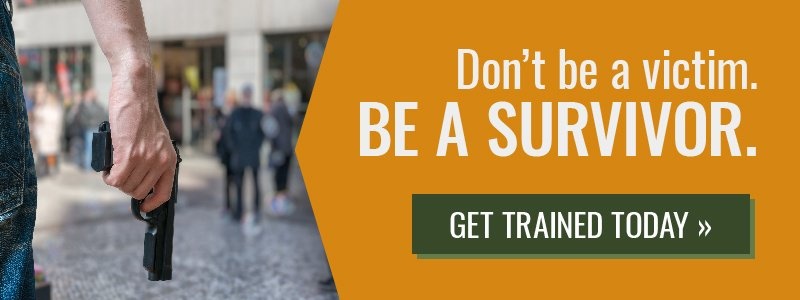 Stopping the bleed is essential to saving lives during an active shooter event or any other type of emergency. But bleeding isn't the only sign of a serious injury, and it certainly is not the only type of injury you could encounter after an act of violence.
Stopping the bleed is essential to saving lives during an active shooter event or any other type of emergency. But bleeding isn't the only sign of a serious injury, and it certainly is not the only type of injury you could encounter after an act of violence.
In order to treat injuries, you must also know how to identify them. In this article, we'll address three types of traumatic injuries that don't require bleeding control, but that do require the attention of a first responder like yourself.
Internal Bleeding
Internal bleeding happens as a result of trauma. It can be caused by penetration, but it can also be caused by a severe blow, which means a person can experience internal bleeding even if they are not bleeding externally.
While internal bleeding is not as immediately life-threatening as a severe hemorrhage, it is still dangerous and should be treated by medical professionals as quickly as possible. However, sometimes internal bleeding is not apparent until later. If you or someone you know is experiencing any of the below symptoms after a traumatic event, get them to a hospital as soon as possible.
Signs of internal bleeding:
- Pain or swelling of the abdomen can be caused by bleeding in the liver or spleen.
- Ecchymosis is a condition in which the skin turns dark purple and results when the bleeding that's happening internally begins to bleed into the skin.
- Swelling, tightness, and pain will occur if a broken bone causes internal bleeding.
- Headache, seizures, and loss of consciousness are all signs that there could be bleeding on the brain.
Burns
Explosives have become an all-too-common tactic used to attack large crowds of people. We've seen this happen on the news more than once, and one of the most recent instances was the bombing at the Boston Marathon on April 15, 2013.
If you are ever in a situation where someone has major burns from an explosive or perhaps even after a car accident, here's what you need to do:
- Remove the person from the fire or accident site if there is immediate danger.
- Call 911.
- If clothing is sticking to the burn, leave it. Tearing it away will make the injury worse.
- Check for breathing and provide rescue breathing or CPR if necessary.
- Cover the burn. Use the most sterile bandage, cloth, or sheet you have on hand.
- Position the burned person so that the most severe injury is above their heart.
- Keep the burn from friction and pressure.
- If possible, use a dry, sterile, non-stick bandage to separate burned fingers or toes.
Things NOT to do when treating a burn victim:
- Do NOT apply ointments or water to the burn.
- Do NOT break burn blisters or disturb dead skin.
- Do NOT touch a victim who has experienced an electrical burn. Use a non-metallic object to move them away from danger.
- Do NOT blow on the burn, and avoid breathing on it.
- Do NOT remove clothing that is covering the burn.
- Do NOT give the person anything to eat or drink.
- If you suspect an airway burn, do NOT place a pillow under the person's head as this could block the airways.
Shock
Any type of traumatic injury can lead to shock. While shock is not considered to be life-threatening in itself, someone who goes into shock could put themselves and/or others at risk, especially during a violent encounter.
Here are the best ways to prevent and treat shock:
- Lay the person on the floor or ground.
- Raise the feet about 12 inches off the ground.
- Keep the person warm by covering them with a coat or blanket.
- If they are vomiting, turn the shock victim on their side.
- Remove or loosen tight clothing, especially around their neck.
- Talk to them reassuringly if possible.
- Do NOT give them anything to eat or drink.
Unfortunately, in situations such as a workplace or school shooting, the above preventative techniques may not be realistic. Use your best judgement and respond as necessary.
The right response starts with the right training.
While blogs and articles are helpful in informing a proper response during an emergency, there's nothing that can compare to hands-on, scenario-based training. Contact us today to schedule an on-site class, or to simply ask those questions you've been mulling over about Active Shooter Response.
.png?width=499&height=133&name=Logo-menu%20(1).png)



